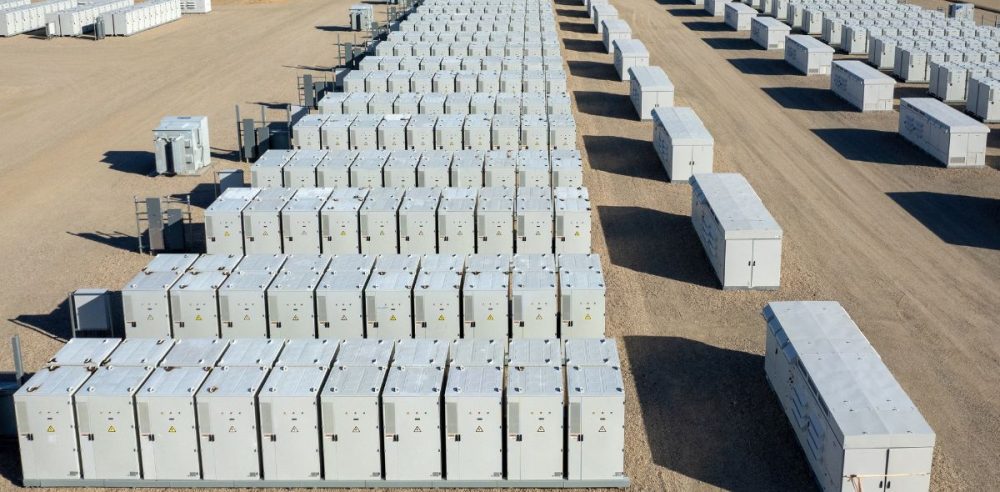A foreign-owned and BlackRock-backed company is behind the effort to build a new lithium-ion battery energy storage system in Savoy, just north of Dallas.
“Based in Houston, Texas, ENGIE North America Inc. is a regional hub of ENGIE, a global leader in low-carbon energy and services,” the company website reads.
While this statement would give many readers the impression that ENGIE is an American company, it is actually owned by ENGIE SA, a French multinational electric utility corporation.
“On November 6, 2024, BlackRock, acting on behalf of clients and funds it manages, declared to the AMF [Autorité des Marchés Financiers] that it had exceeded the threshold of 5% of the capital of Engie and held, on behalf of said clients and funds, 5.002% of the capital and 3.83% of the voting rights of this company,” Market Screener reported in early November 2024.
At least since 2020, ENGIE Impact has signaled excitement about BlackRock’s efforts to pursue an environmental, social, and governance (ESG) investment strategy that was supposed to move the company toward alternative forms of energy despite the relatively greater profitability of fossil fuels. ESG is an approach to investing that takes the advancement of leftist social policies into account when considering performance.
ESG investing was a prominent feature of BlackRock’s investment strategy until 2024 when CEO Larry Fink appeared to signal a partial redirection, The Dallas Express reported. However, ENGIE SA appears to have continued with its ESG agenda even as BlackRock has de-emphasized it, promising a transition toward net-zero emissions by investing in “decarbonized energy” and battery energy storage systems (BESS), as well as “Gender equality with [40-60%] women in management positions [by 2030],” in a 2024 report.
ENGIE’s BESS projects are mentioned numerous times in the ESG report.
Regarding the Hazlewood BESS in Australia, ENGIE SA’s report lays out the merits of BESS projects. The report indicated that BESS can supplement energy production deficiencies of green energy infrastructure, such as solar, by storing surplus energy and releasing it to meet peak demand for up to one hour.
“For Leigh Newbery, General Manager Engineering & Asset Delivery, Energy Management, Australia & New Zealand, this is significant progress, since ‘it increases the stability of the State’s power grid and illustrates ENGIE’s commitment to the development of assets which provide the flexibility needed by energy systems.’ This project is a milestone for ENGIE, which is aiming for installed capacity from batteries of 10 GW worldwide by 2030.”
One entry on ENGIE’s website says BESS facilities are important for cost savings.
“Battery Energy Storage Systems allow you to engage in energy arbitrage. With BESS, you buy your energy during off-peak hours when grid prices are lowest, store it, and use it during peak hours. When coupled with on-site wind or solar power plants, BESS enable you to maximize the value of the electricity produced from such renewable sources, contributing to a certain extent to reducing the cost of energy both at the wholesale level and hence reflecting it on electricity bills.”
Nancy White, an anti-BESS activist from Van Zandt County, told The Dallas Express that the BESS under construction in Savoy, Texas, could store enough power for its service region for around two hours.
“What difference will two hours make?” she asked rhetorically, pointing to the widespread power outages in North Texas that left Texans without power for days during the snowstorms of early 2021. “My groceries are still going to spoil.”
White’s comments were made during a citizen’s town hall event in Sherman on March 31, where people from Savoy and the surrounding area gathered to discuss the BESS. She said lithium-ion BESS facilities are prone to fire and can reach extreme temperatures quickly. If the battery cells get above 176 degrees Fahrenheit, reaching “runaway” status, the fires can soar toward 3000 degrees Fahrenheit.
Environmental impacts underscored many of White’s concerns.
She noted that another company’s BESS at Moss Landing in California caught fire in January and that many residents who lived near the plant reported feeling sick for days after the blaze. Environmental activist Erin Brockovich cited possible soil contamination with heavy metals in a lawsuit filed earlier this month over the Moss Landing Fire.
Some outlets indicate that this was the fourth “thermal incident” at the facility involving overheating or fire since 2021, although the previous episodes had not been as catastrophic.
White indicated that a Moss Landing-style disaster could pose dangers to natural resources and critical infrastructure. The activist showed a map of the planned BESS development in Savoy showing the storage center above a national underground gas and diesel pipeline. Another map White displayed indicated that several important bodies of water, including the Lacey Fork watershed and the Carrizo-Wilcox Aquifer, were under the BESS center or nearby.
The Dallas Express reported that local elected officials were outraged by the project. Residents were unaware of the planned development until around three months ago when a Facebook group brought it to their attention.
The future of the ENGIE Savoy BESS is unclear.
The Fannin County Commission voted unanimously on March 25 to form a 391 Commission with the City of Savoy to study the project and ensure the county has the resources to manage the county’s development.


